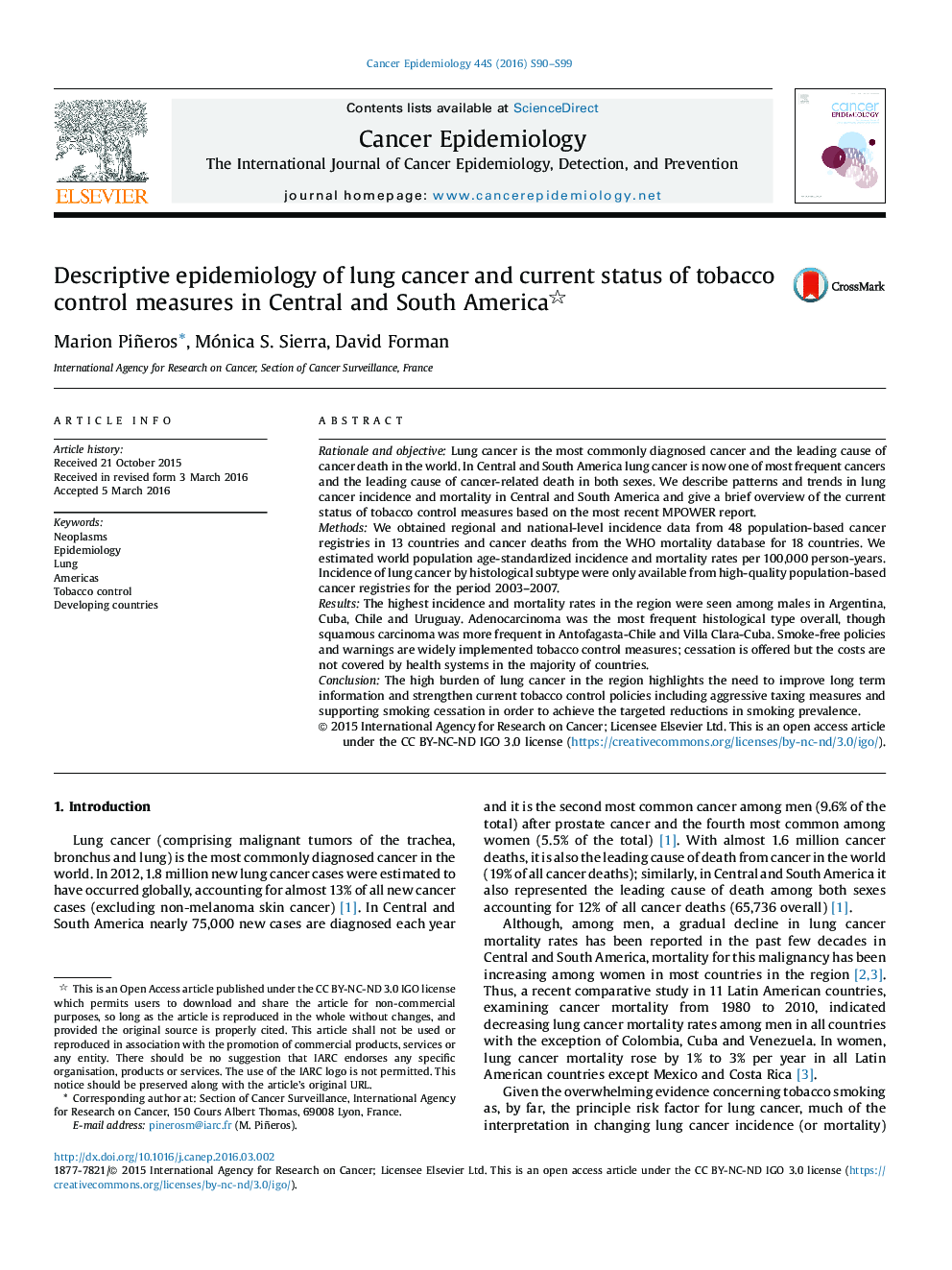| کد مقاله | کد نشریه | سال انتشار | مقاله انگلیسی | نسخه تمام متن |
|---|---|---|---|---|
| 5524900 | 1401457 | 2016 | 10 صفحه PDF | دانلود رایگان |
- Lung cancer is the leading cause of cancer death in Central and South America among both sexes.
- In the region, Cuba, Argentina, Chile and Uruguay have the highest lung cancer burden.
- Adenocarcinoma is currently the most frequent histological diagnosis of lung cancer in the region.
- There is a need to improve long term data on burden and smoking prevalence.
- Smoke-free tobacco policies are the most widely implemented tobacco control measures.
Rationale and objectiveLung cancer is the most commonly diagnosed cancer and the leading cause of cancer death in the world. In Central and South America lung cancer is now one of most frequent cancers and the leading cause of cancer-related death in both sexes. We describe patterns and trends in lung cancer incidence and mortality in Central and South America and give a brief overview of the current status of tobacco control measures based on the most recent MPOWER report.MethodsWe obtained regional and national-level incidence data from 48 population-based cancer registries in 13 countries and cancer deaths from the WHO mortality database for 18 countries. We estimated world population age-standardized incidence and mortality rates per 100,000 person-years. Incidence of lung cancer by histological subtype were only available from high-quality population-based cancer registries for the period 2003-2007.ResultsThe highest incidence and mortality rates in the region were seen among males in Argentina, Cuba, Chile and Uruguay. Adenocarcinoma was the most frequent histological type overall, though squamous carcinoma was more frequent in Antofagasta-Chile and Villa Clara-Cuba. Smoke-free policies and warnings are widely implemented tobacco control measures; cessation is offered but the costs are not covered by health systems in the majority of countries.ConclusionThe high burden of lung cancer in the region highlights the need to improve long term information and strengthen current tobacco control policies including aggressive taxing measures and supporting smoking cessation in order to achieve the targeted reductions in smoking prevalence.
Journal: Cancer Epidemiology - Volume 44, Supplement 1, September 2016, Pages S90-S99
